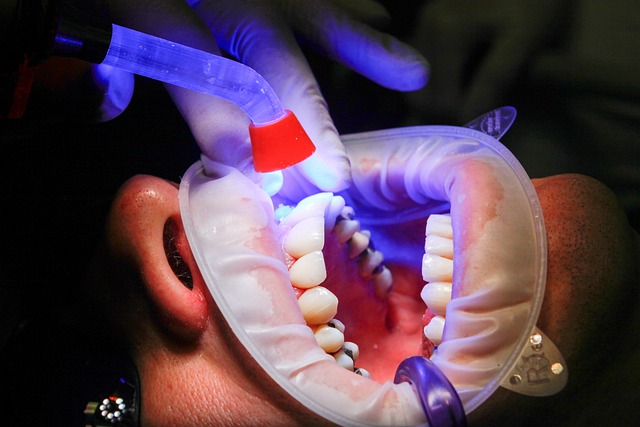General Liability Insurance is vital for clinics to manage risks, offering protection against accidents, injuries, and property damage within clinic premises. It covers legal fees and compensates victims, ensuring uninterrupted operations and allowing focus on patient care. Key elements in selecting a policy include comprehensive healthcare-specific coverage, adequate limits & deductibles, clear language defining covered events, and tailored defense during claim settlements. By choosing the right insurer specializing in medical malpractice, clinics can safeguard against diverse risks, maintain financial security, and prioritize patient care. Best practices involve consent forms, record-keeping, guideline updates, and open communication with patients to mitigate legal exposure.
“Ensuring the smooth operation and longevity of your clinic begins with robust general liability insurance—a cornerstone of protection against unpredictable legal claims. This article guides healthcare professionals through the intricacies of general liability, highlighting its paramount importance in managing risks specific to clinical settings. We’ll explore key policy elements, common threats, and strategic tips for selecting the ideal insurer. Additionally, we offer best practices for risk management, empowering clinicians to stay ahead of potential liabilities.”
- Understanding General Liability Insurance for Clinics
- Why Is Liability Coverage Essential for Healthcare Practices?
- Key Elements of a Reliable General Liability Policy
- Types of Risks and Claims Clinics Face
- How to Choose the Best Insurer for Your Clinic's Liability Coverage
- Managing Risk: Best Practices for Clinicians to Stay Protected
Understanding General Liability Insurance for Clinics

General Liability Insurance is a cornerstone of risk management for any clinic, ensuring protection against potential claims and losses. This type of insurance provides liability coverage for clinics, shielding them from financial strain in the event of accidents, injuries, or property damage occurring within their premises. It’s designed to compensate victims and cover legal fees, offering peace of mind for clinic owners who face an ever-present risk of litigation.
For clinics, having robust general liability coverage means being prepared for a range of scenarios, from slip-and-fall incidents to medical malpractice suits. The insurance policy typically covers both bodily injury and property damage liabilities, ensuring that the clinic can continue its operations without facing insurmountable financial setbacks. By understanding and prioritizing this essential aspect of risk management, clinic owners can focus on delivering quality patient care, confident in their protection against unexpected events.
Why Is Liability Coverage Essential for Healthcare Practices?

Liability coverage is a cornerstone of risk management for any healthcare practice, from small clinics to large hospitals. It protects against potential financial setbacks arising from medical errors, patient injuries, or legal disputes, which can be extremely costly and damaging to reputation. In the dynamic healthcare landscape, where regulations evolve and patient expectations rise, having robust liability insurance provides a safety net, offering peace of mind and ensuring practices can continue to serve their communities effectively.
For clinics, especially those catering to diverse patient populations, liability coverage is not just advisable but indispensable. It safeguards against lawsuits that could cripple financial stability and disrupt day-to-day operations. Whether it’s addressing issues related to medical malpractice, professional negligence, or even simple accidents on premises, the right liability insurance ensures healthcare providers can focus on delivering quality care without the constant burden of potential legal repercussions.
Key Elements of a Reliable General Liability Policy

When seeking a general liability policy for your clinic, several key elements are crucial to ensure reliable protection. Firstly, understand that the policy should cover a wide range of potential risks and liabilities specific to healthcare settings. This includes medical malpractice, personal injury, and property damage claims that may arise from patient care, employee activities, or facility maintenance.
A comprehensive liability coverage for clinics should also offer adequate limits and deductibles tailored to your practice’s size and operations. Ensure the policy provides sufficient protection against financial losses in case of lawsuits or claims. Additionally, look for policies with clear and broad language that defines covered events and responsibilities, offering peace of mind and solid defense in the event of a claim.
Types of Risks and Claims Clinics Face

Clinics, much like any other business, are exposed to a multitude of risks and potential claims. These can range from slip-and-fall incidents on the premises to malpractice suits related to patient care. General liability coverage is a cornerstone of risk management for clinics, providing financial protection against these unforeseen events. It’s designed to cover legal costs, settlement fees, and any damages awarded in such cases.
The types of claims clinics may face are varied. They include personal injury, property damage, professional negligence, and product liability. For instance, a patient might slip and fall due to a wet floor, leading to bodily harm and a potential lawsuit. Alternatively, a medical mistake could result in malpractice charges. Liability coverage for clinics ensures that these incidents don’t cripple the business financially, allowing them to maintain operations and focus on patient care.
How to Choose the Best Insurer for Your Clinic's Liability Coverage

When selecting an insurer for your clinic’s liability coverage, it’s crucial to look beyond just the cheapest option. The best insurer is one that understands the unique risks facing healthcare providers and can offer tailored protection. Start by researching companies specializing in medical malpractice insurance. Check their reputation, financial stability, and customer reviews to ensure trustworthiness.
Consider the scope of their liability coverage, including limits for damages and potential claims. Compare policies to find one that aligns with your clinic’s specific needs. Look for additional services like legal defense costs, claim management support, and risk assessment tools, which can help manage and mitigate risks effectively. Remember, choosing the right insurer is an investment in your clinic’s future protection.
Managing Risk: Best Practices for Clinicians to Stay Protected

Managing risk effectively is paramount for clinicians to protect themselves and their practices from potential liabilities. The first line of defense is robust liability coverage for clinics. This includes general liability insurance that shields against claims of bodily injury or property damage, as well as professional liability insurance tailored to medical malpractice suits.
Best practices extend beyond insurance. Clinicians should establish clear consent forms outlining procedures and potential risks, maintain meticulous records, and stay updated on the latest medical guidelines and regulations. Fostering open communication with patients about their care and encouraging feedback create a culture of transparency that can mitigate legal exposure.
